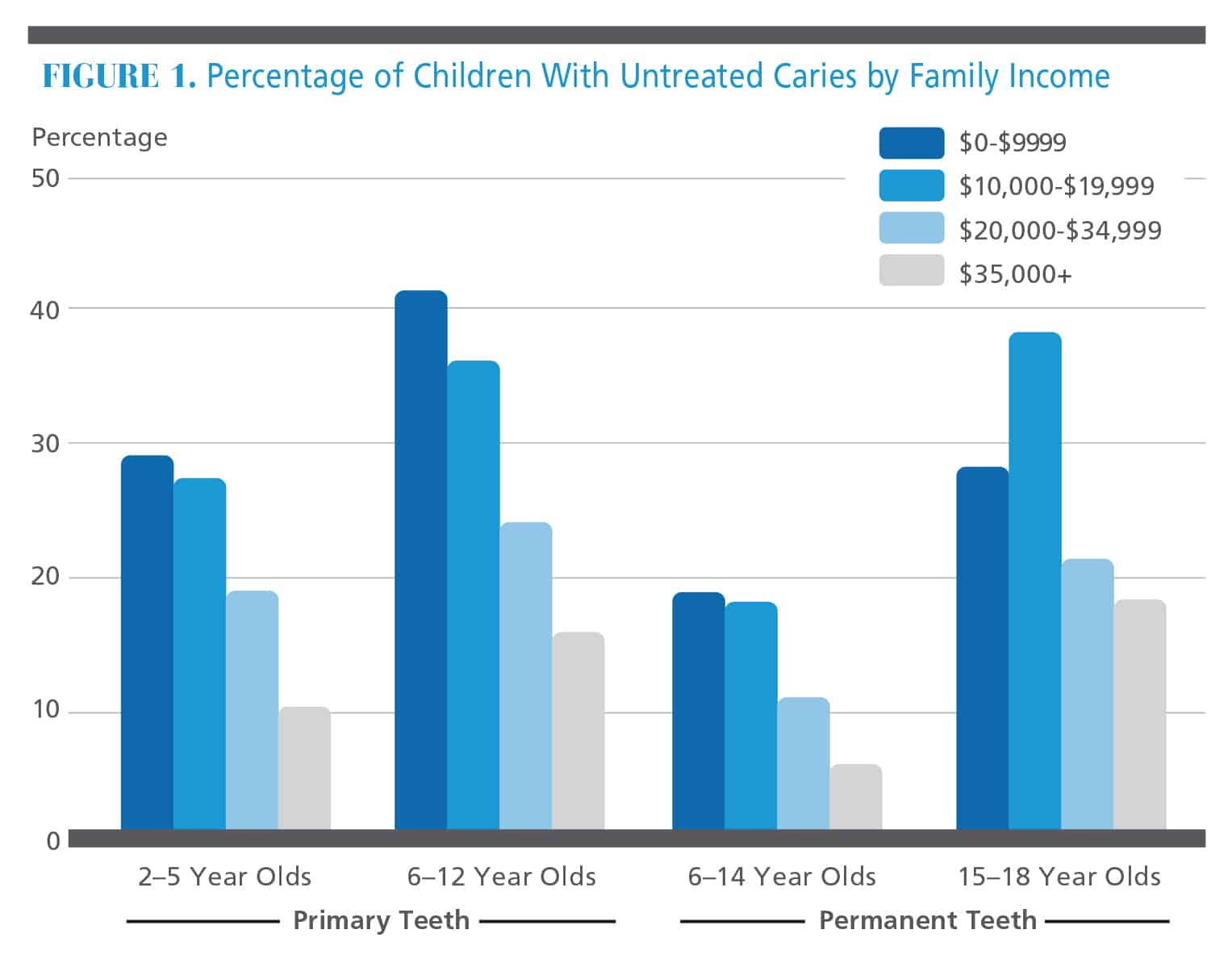Solving the Crisis in Little Teeth
While there has been much angst and hand wringing over the early childhood caries (ECC) epidemic, significant progress has been made addressing this crisis in what the American Academy of Pediatric Dentistry (AAPD) calls “little teeth.”
While there has been much angst and hand wringing over the early childhood caries (ECC) epidemic, significant progress has been made addressing this crisis in what the American Academy of Pediatric Dentistry (AAPD) calls “little teeth.” Yet, despite these advances, evidence suggests that ECC is still a significant threat.1,2 In response, the academy — along with like-minded groups — remains committed to raising awareness about ECC and finding ways to eliminate this preventable disease.
In its “The State of Little Teeth” report,3 the AAPD describes ECC as the most common chronic early childhood disease in the United States. The report cites data that indicate tooth decay affects approximately one in four Americans ages 2 to 5,4 and that by age 5, approximately 60% will have experienced caries.5,6 In addition, caries is often untreated in children under the age of 3.7 Among the socioeconomic issues associated with the crisis, low income is strongly correlated with ECC (Figure 1): Simply put, the poorer the household, the greater the likelihood that caries will go untreated. Among the 5-year-old to 17-year-old demographic, for example, 80% of untreated decay is found in 25% of the population — mostly among low-income and other vulnerable groups.8–10

The issues fueling the ECC crisis are myriad, but some of the chief drivers are:
- A lack of knowledge among parents, caregivers and health care professionals about the importance of oral health and early dental visits
- Inadequate or lack of dental coverage
- Challenges in accessing care — many dentists, for example, are unwilling or unable to treat young children due to these patients’ unique needs,11–13 or because the office does not accept Medicaid14–16
Two of our most effective tools against ECC are the early dental visit and establishing a dental home by age 1. Combined, these steps will allow clinicians to prevent or treat caries in its earliest stages. They also provide opportunity to educate parents and caregivers about the causes and risks of ECC, the importance of healthy dietary practices and oral hygiene, and ways to limit exposure to caries-causing bacteria.2
As part of efforts to address the crisis, the AAPD advocates that, as a profession and nation, we need to do more to ramp up dental benefits, improve access to care, and increase the number of dentists who are prepared to treat young children. It also encourages providers, parents and caregivers to “close the gap between knowledge and action.” The goal is not only to educate parents and caregivers about the importance of oral health, but also to motivate them beyond good intentions to actually take the entire family — infants and toddlers included — to the dentist regularly.
Caries lesions are preventable, but only if we work diligently toward the ultimate goal of eradicating this all-too-common disease.
References
- Dye BA, Arevalo O, Vargas CM. Trends in pediatric dental caries by poverty status in the United States, 1988–1994 and 1999–2004. Int J Pediatr Dent. 2010;20(2):132–143.
- Çolak H, Dülgergil CT, Dalli M, Hamidi MM. Early childhood caries update: A review of causes, diagnoses, and treatments. J Nat Sci Biol Med. 2013;4(1):29–38.
- American Academy of Pediatric Dentistry. The State of Little Teeth. 2014. Available at: http://www.aapd.org/assets/1/7/State_of_Little_Teeth_Final.pdf. Accessed June 20, 2016.
- Dye BA, Tan S, Smith V, et al. Trends in oral health status: United States, 1988–1994 and 1999–2004. Vital Health Stat. 2007;11(248):1– 92.
- U.S. Department of Health and Human Services. Oral Health in America: A Report of the Surgeon General. National Institute of Dental and Craniofacial Research. Available at: http://www.nidcr.nih.gov/DataStatistics/SurgeonGeneral/Report/ExecutiveSummary.htm. Accessed June 20, 2016.
- Pierce KM, Rozier RG, Vann WF Jr. Accuracy of pediatric primary care providers’ screening and referral for early childhood caries. Pediatrics. 2002;109(5):E82–2.
- Tinanoff N, Reisine S. Update on early childhood caries since the Surgeon General’s Report. Academic Pediatr. 2009;9(6):396–403.
- General Accounting Office. Dental Disease Is a Chronic Problem Among Low-Income Populations. Report to U.S. Congress, April 2000. Available at: http://www.gao.gov/new.items/he00072.pdf. Accessed June 20, 2016.
- National Institute of Dental Research. Oral Health of United States Children: The National Survey of Dental Caries in U.S. School Children, 1986–1987. Bethesda MD: U.S. Department of Health and Human Services, 1989. Available at: https://catalog.hathitrust.org/Record/003192218. Accessed June 20, 2016.
- DeNavas-Walt C, Proctor BD, Smith JC. U.S. Census Bureau. Current Population Reports: Income, Poverty, and Health Insurance Coverage in the United States: 2012. Available at: http://www.census.gov/prod/2013pubs/p60-245.pdf. Accessed June 20, 2016.
- Partnership for Healthy Mouths Healthy Lives. Available at: http://www.healthymouthshealthylives.org/. Accessed June 20, 2016.
- Mofidi M, Rozier RG, King RS: Problems with access to dental care for Medicaid-insured children: what caregivers think. Am J Public Health. 2002; 92(1):53–58.
- Pew Charitable Trusts. In Search of Dental Care: Two Types of Dentist Shortages Limit Children’s Access to Care. Available at: http://www.pewtrusts.org/~/media/legacy/uploadedfiles/pcs_assets/2013/insearchofdentalcarepdf.pdf. Accessed June 20, 2016.
- Stearns SC, Rozier RG, Kranz AM, Pahel BT, Quiñonez RB. Cost-effectiveness of preventive oral health care in medical offices for young Medicaid enrollees. Arch Pediatr Adolesc Med. 2012;166(10):945–951.
- Felland L, Lauer J, Cunningham P. Community efforts to expand dental services for low-income people. Center for Studying Health System Change. Available at: http://www.hschange.org/CONTENT/1000/. Accessed June 20, 2016.
- Bugis BA. Early Childhood Caries and the Impact of Current U.S. Medicaid Program: An Overview. Int J Dent. 2012. Available at: http://www.hindawi.com/journals/ijd/2012/348237/. Accessed June 20, 2016.
- American Academy of Pediatric Dentistry Consumer Survey. October 2013.
From Decisions in Dentistry. July 2016;1(09):54.


